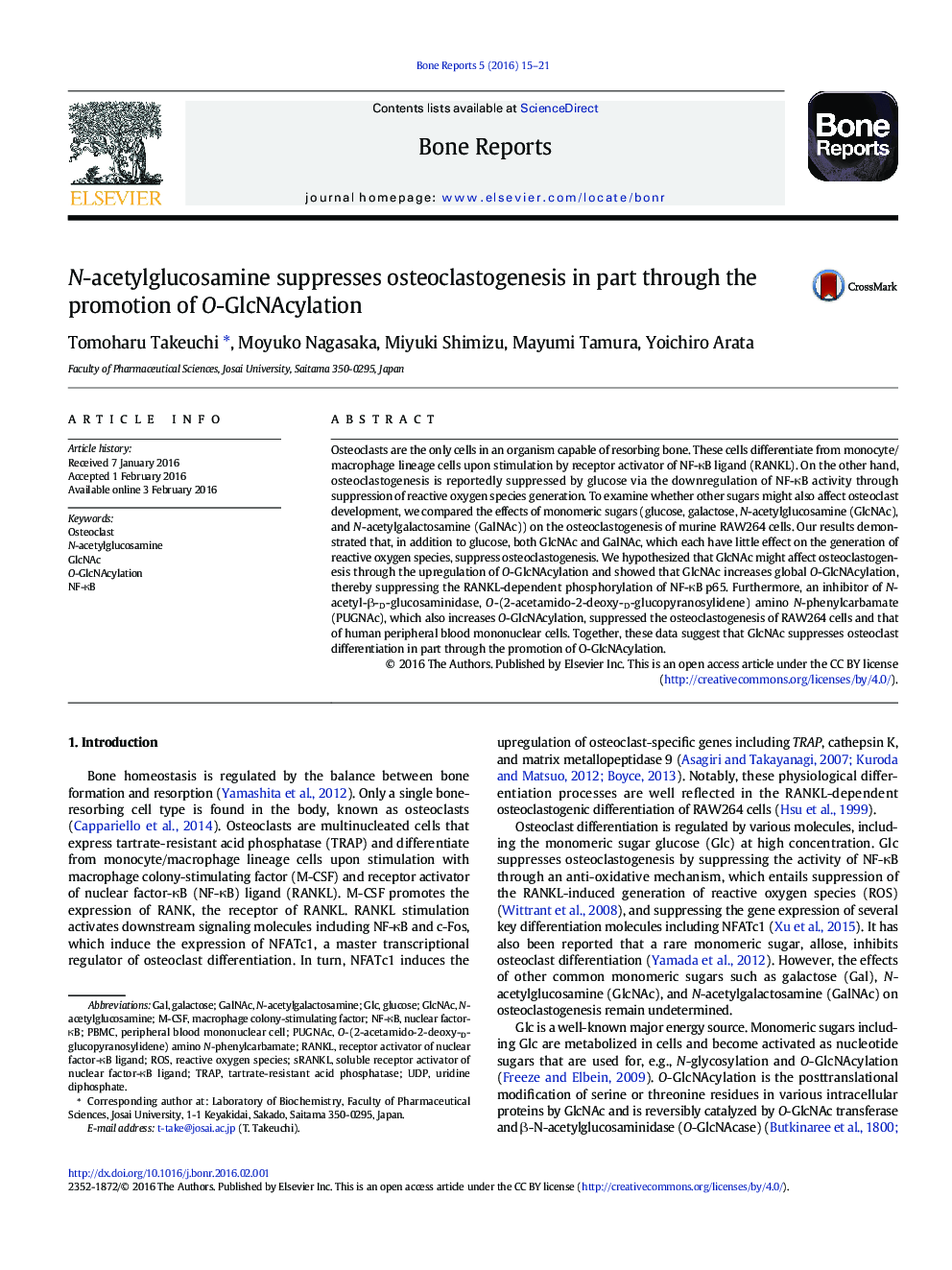| Article ID | Journal | Published Year | Pages | File Type |
|---|---|---|---|---|
| 2792296 | Bone Reports | 2016 | 7 Pages |
•Along with glucose, the monomeric sugars GlcNAc and GalNAc suppress osteoclastic differentiation.•Unlike glucose, GlcNAc and GalNAc have little effect on RANKL-induced ROS production.•GlcNAc and the N-acetyl-β-D-glucosaminidase inhibitor PUGNAc both increase O-GlcNAcylation and suppress osteoclastogenesis.•Upregulation of O-GlcNAcylation suppresses the RANKL-dependent phosphorylation of NF-κB p65.•Together, these results suggest that GlcNAc suppresses osteoclastogenesis in part through the promotion of O-GlcNAcylation.
Osteoclasts are the only cells in an organism capable of resorbing bone. These cells differentiate from monocyte/macrophage lineage cells upon stimulation by receptor activator of NF-κB ligand (RANKL). On the other hand, osteoclastogenesis is reportedly suppressed by glucose via the downregulation of NF-κB activity through suppression of reactive oxygen species generation. To examine whether other sugars might also affect osteoclast development, we compared the effects of monomeric sugars (glucose, galactose, N-acetylglucosamine (GlcNAc), and N-acetylgalactosamine (GalNAc)) on the osteoclastogenesis of murine RAW264 cells. Our results demonstrated that, in addition to glucose, both GlcNAc and GalNAc, which each have little effect on the generation of reactive oxygen species, suppress osteoclastogenesis. We hypothesized that GlcNAc might affect osteoclastogenesis through the upregulation of O-GlcNAcylation and showed that GlcNAc increases global O-GlcNAcylation, thereby suppressing the RANKL-dependent phosphorylation of NF-κB p65. Furthermore, an inhibitor of N-acetyl-β-D-glucosaminidase, O-(2-acetamido-2-deoxy-D-glucopyranosylidene) amino N-phenylcarbamate (PUGNAc), which also increases O-GlcNAcylation, suppressed the osteoclastogenesis of RAW264 cells and that of human peripheral blood mononuclear cells. Together, these data suggest that GlcNAc suppresses osteoclast differentiation in part through the promotion of O-GlcNAcylation.
